I tend to always playback music in its native sample-rate, and so generally stuck to ‘Bit-Perfect’ mode. Switching between the modes on-the-fly doesn’t reveal much by way of immediate difference between each mode. To be honest, the notion of ruthlessly comparing filter modes instead of enjoying my music collection doesn’t really appeal to me a lot. However, the Pro iDSD is pitched as an Uber-DAC. And you may find it enjoyable to spend more time comparing the various modes. I did switch to ‘Transient Aligned’ for several albums, and did feel like it ever so slightly changed the feeling of the attack/decay on the edges of notes and transients, and perhaps the slightest bit less ‘clinical’.
PCM files can be ‘Remastered’, or upsampled to DSD512 or DSD 1024 in addition to the five filters. I found on more revealing headphones that this actually created a digital noise-floor, more apparent in DSD1024. Not so much of a problem when music was playing, but all the same it was audible between tracks, so I tended to avoid this.
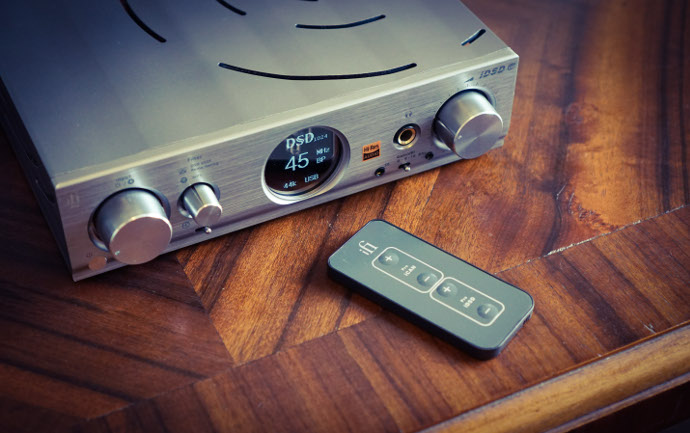
iFi Audio Pro iDSD
And lastly, this squarely digital product has a somewhat curious, but very welcome old-school addition of a tube stage to complete the purely Class-A J-FET solid-state mode. When “Tube” or “Tube+” modes are engaged, the ‘iFi Pro’ logo on the front-panel will flash while the NOS General Electric 5670 warms-up. Playback will continue in solid-state mode until the tube is warmed-up and ready to go, by which time it’ll switch-over. “Tube+” mode, as explained in the manual, “reduces available negative feedback to a minimum. As a result, a greater amount of the tubes natural harmonic distortion is produced”. If you’re going to go tube, go full-tube, right?
I tended to leave it in Tube+ most of the time. The changes in overall timbre are definitely more noticeable than switching between filters. The added harmonic distortion of the tube creates an ever-so-slightly more pleasing and euphonic texture to vocals. It also added some overall richness and body to the music. Plus, the red glow filtering through the display window and vent-holes in the casing looks awesome. It adds a touch of drama to the experience. However, I must note that it’s still very-much a revealing and transparent presentation in Tube and Tube+ mode. Don’t expect to have two/three wholly distinct sound signatures on your hands, nor a fat, warm vintage tube-sound.
Headphone performance
iFi have clearly designated their Pro xCAN to sit atop their headphone amplifier perch, but the headphone-stage of the Pro iDSD is dadding no less than three different outputs: 3.5mm and 6.3mm single-ended; and – slightly puzzlingly for a desktop unit – a 2.5mm balanced output. At the time of publishing, iFi are releasing an alternate option with Sony’s 4.4mm balanced ‘Pentacon’ output. As reviewed in this unit, 2.5mm is a slightly frustrating choice. For full-size headphone users looking to reap the performance of the additional power of fully-balanced topology, or for those looking to plug their XLR-terminated headphones into their fancy-new $2,499 DAC/amp.
I can only presume that it was a matter of real-estate both on the front fascia and inside the unit that prevented going with a four-pin XLR set-up. And, perhaps iFi are hoping to get full-size headphone users to trade-up to the Pro xCAN. IEM users in particular might find this useful. I was able to use 2.5mm cables on my Sennheiser HD580/650 and the Meze 99 Classics on the Pro iDSD to enjoy balanced output.
Power output from the balanced jack is rated at 1,500mW RMS x 2 @ 64 Ohm; and 4,000mW max. x 2 @ 16 Ohm. There are no output specs are offered for higher impedance levels. The output-power is fairly impressive, and enough to power nearly any headphone to ear-splitting levels. In-fact, I briefly tested the notoriously insensitive HiFiman HE-6se with the Pro iDSD. In highest-gain setting I was able to enjoy normal levels of listening fairly easily without going past 12 o’clock on the volume dial, without any hint of distortion or sense of it running out of puff.
During my review period, I spent most time listening with two 300 ohm Sennheiser stablemates – the HD580 and HD650. I also used the ZMF Eikon (also 300 ohm), and the 13 ohm Aeon Flow Open from MrSpeakers. While the Aeon Flow has a very low impedance, it’s a power-hungry set of cans and likes ample gobs of power to perform at its best. Otherwise the Aeons can tend to feel a bit lacking in dynamics. I was very pleased to find that the Pro iDSD is perhaps the best match I’ve found the Aeons to-date. ‘Before Your Very Eyes’ by Atoms for Peace has never sounded as good as it did with the injection of some tube flavour up-stream. The incredibly fast and complex passages were handled with slam and finesse, while the echo and decay of Thom Yorke’s vocals floated spookily through the soundscape.
Switching-up to an even harder electronic track, Apex Twin’s ‘Produk 29’ delivered hard-hitting planar bass goodness from the Aeons. With tight and fast control on the leading/trailing edge of notes, with an uncannily inky-black background in-between.
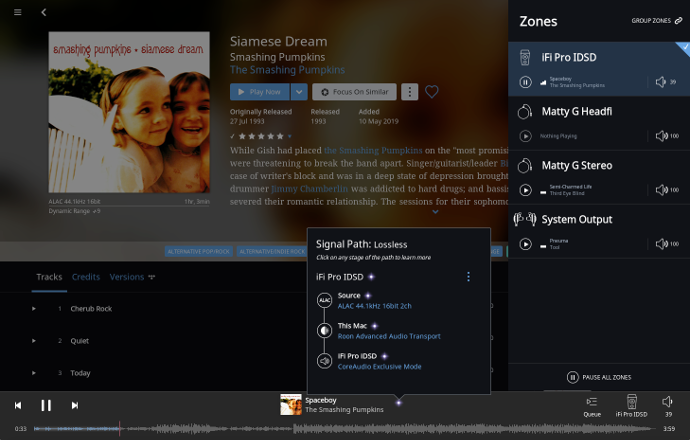
iFi Audio Pro iDSD
A good test of a DAC/amp is its ability to convincingly reproduce live, and acoustic live music at that. From my experience, no headphones can consistently deliver analogue sounds more reliably than the venerable Sennheiser HD650. Alice in Chain’s MTV ‘Unplugged’ album (one of the best recorded live albums of all time, in this writer’s opinion…of course) will place you in the front row of the intimate 1996 gig. The Pro iDSD allows you to visualise each instrument left to right on-stage, and places vocalist Layne Staley immediately in-front of you. The strike of the guitar-strum and fret-buzz in ‘Rooster’ feels as close to live as you’ll ever manage via the Pro iDSD.
One very important musical-test for me is the ability to deliver driving, energetic multi-tracked electric guitars. My favourite song that does just that is ‘Hummer’ by Smashing Pumpkins. Plugging in my Eikons and selecting “Tube+” and the Transient-Aligned filter. I was hit with a wall of dynamic amplified guitar glory that left me grinning.
Verdict
So let’s just get this out of the way: the Pro iFi is a ridiculously good DAC, and likely the last D/A converter you’ll ever need, provided that’s what you ask from it. It will decode, filter, and dispatch any known file-type and play it back with believable, and emotive analogue ease. It’s also a very good headphone amplifier, and unless you believe you need to strap your vintage planars to the back of a stereo-amp to “get the best out of them”, you’ll be well-served with the Pro iDSD.
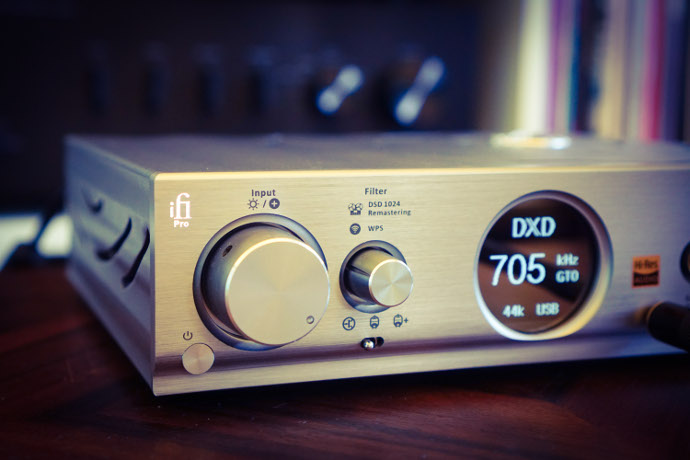
iFi Audio Pro iDSD
Being a headphone site, I didn’t venture into the two-channel side of things. But a quick note that it’s an “OK” pre-amp. The remote only has volume control, and there’s no analogue input. The Pro iDSD is a very average standalone source that’s held-back by the current state of its companion software. It frankly needs to be better supported at this price. The streaming functions are handy, and depending on your set-up, could be super-useful. If you’re a Roon subscriber, pay attention.
And then there’s the whole list of features, quirks, and functions that you’ll either love, never use, or will get in the way of simply kicking-back and enjoying music. And therein lies the thing that’s probably most confusing about the Pro iDSD for me.
iFi have done a tremendous job of packing-in every feature under the sun, minus a couple of odd omissions. They have probably created the most over-qualified, and perhaps first DAC/amp/streamer/source/pre-amp/thing-y ever. That means you’re paying for the engineering that’s gone into a ton of things that you’re unlikely to ever use.
Music is a human pursuit at the end of the day, and trying to assess the nuances between filter and file types isn’t my idea of a good time, but it might be yours. Or, that might be your job (it does have “Pro” in the product name, after all). It’s a precision piece of engineering, and will reward the listener with transparent and a shockingly neutral performance, with no masking the truth…save for a little peppering of tube-y goodness when asked-for.
Some people like the comfort and pride that comes with having the top-of-the-line unit. The knowledge that it’s probably the last DAC/amp/streamer/source/pre-amp/thing-y you’ll ever need. With the Pro iDSD you’re certainly getting that! As well as the kitchen sink, the kitchen bench and the kitchen pantry. And the… you see what I mean.







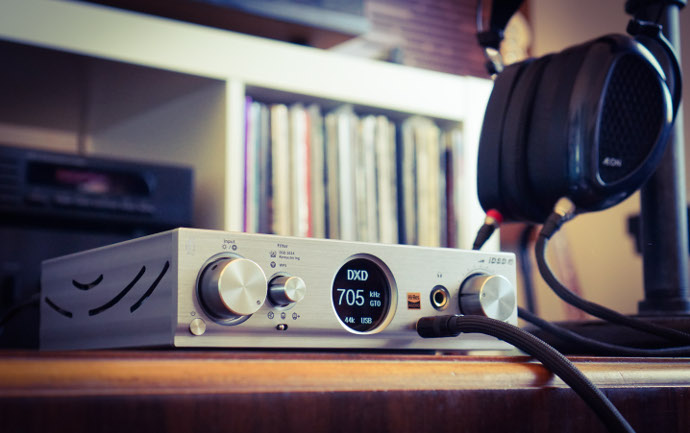
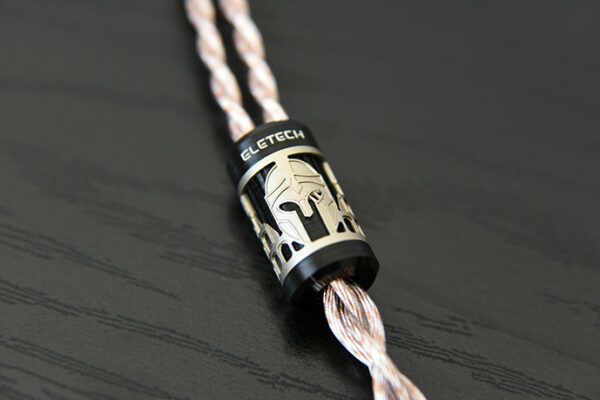
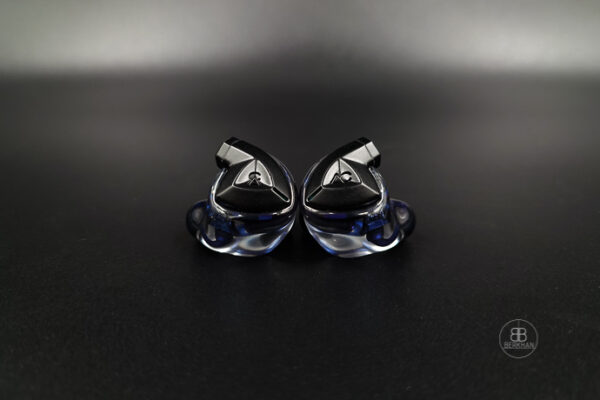
Berkhan
Great pics!
Matty
You’ve set a high benchmark mate…
Golea Andrei Cosmin
Hi Matty,
Are you also going to review the IFI AUDIO PRO ICAN amplifier? Since you liked their Pro iDSD solution, I am really interested in knowing what is your opinion on the iCAN Pro.
I have been using their amplifier for at least 6 months and I am loving it.
Regards,
Andrei.
Matty Graham
Hi Golea, I haven’t planned to as yet but it’d be terrific to try it out “stacked” with its digital counterpart! Watch this space.
Golea Andrei Cosmin
Initially I went to our local retailer just to test out some setups. I already had an ifi audio micro iDSD Black Label which I was using as DAC/AMP with my HD800S.
When I got there, I tested the following setups:
1. Chord Hugo2 as DAC/AMP
2. micro iDSD Black Label as DAC + iCAN Pro as AMP
3. iDSD Pro stacked with iCAN Pro using balanced connection.
Out of these 3 setups, I went with the iCAN Pro amplifier to use together with the Black Label until I will have the money to also buy the iDSD Pro and replace the Black Label completely.
I can’t say I didn’t like the Hugo2, but man…..when I enabled Tube mode and boosted the Bass just to the first level…the iCAN Pro felt like a step above. And this while trying it with the Black Label.
After this acquisition, I also bought some after market XLR balanced cables for the HD800S to use it on the iCAN Pro and again, another step above the 6.3mm cable.
I have a few friends which are talking all day long about their Topping DACs and AMPs but I don’t think they can match the level of design and implementation of devices from companies like Ifi Audio or Chord Electronics.
But it would be interesting also like if you could test out some devices from Topping. I don’t believe I saw any reviews about them on this site.
vonBaron
@Golea Andrei Cosmin
I have Pro IDSD and Pro ICan, the IDSD i great DAC and good DAC/AMP.
But when u add ICan they SQ is two level higher, very clean, transparent, fast, just WOW!
It’s my end-game units.
Golea Andrei Cosmin
Yeah. As I said, this will also be my TOTL setup.
Unfortunately I have other stuff/gadgets on the shopping list so for the moment I am sticking with my Black Label as DAC and it’s enough.
But when I finish with my other upgrades, the Pro iDSD will become a priority.
vonBaron
Little Update!
I just get 2.5mm BAL adapter and now Pro IDSD sounds way better than with 6.3mm or 3.5mm output.
Golea Andrei Cosmin
Why would you use the Pro iDSD to amplify your headphones when you just stated in one of your replies above that you also have the Pro iCAN?
In order to have the best sound quality you link the iDSD to the iCAN through balanced cables and also use the balanced XLR output from iCAN for your headphones?
vonBaron
Yes i have Pro ICAN but now i don’t have time to use it propelly.
It takes time to warm it up to sound best (20-30min), heat what he generates is very big, so ergonomics is poor.
Yes i have XLR IC and for most time i use XLR headphone cables for best sound.